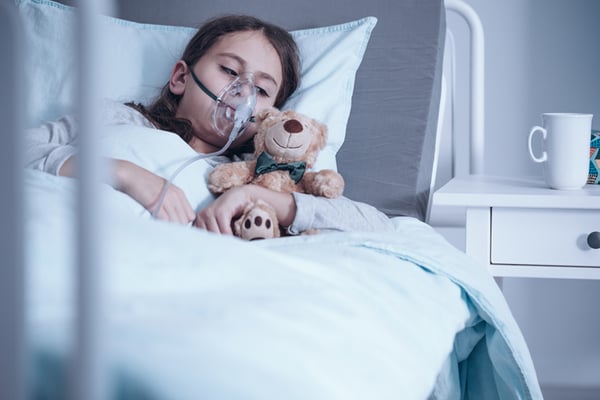
Respiratory distress is a common reason for emergency room visits in children and neonates. Children under four are especially vulnerable to respiratory problems. First responders typically see an uptick in respiratory issues among children during cold and flu season. A prompt response can save lives; in 2023, 106 children died from flu complications.
The flu vaccine can greatly reduce the risk, particularly in vulnerable children. First responders should ensure they are fully vaccinated. Your agency may also want to conduct public outreach campaigns urging people to get a flu shot. When treating children with suspected respiratory distress, here are the telltale signs.
Respiratory Rate
A sustained increase in respiratory rate, particularly in a child who has not recently exerted themselves, suggests the child is not getting sufficient oxygen. Normal respiratory rates decline with age, and are as follows:
- 0-12 months: 30 to 60 breaths per minute
- 1-3 years: 24 to 40 breaths per minute
- 4-5 years: 22 to 34 breaths per minute
- 6-12 years: 18 to 30 breaths per minute
- 13-18 years: 12 to 16 breaths per minute
Increased Heart Rate
A sustained elevation in pulse, particularly if accompanied by other signs of respiratory distress, is a red flag. Pulse declines with age, and normal ranges are as follows:
- Age 0-1 month: 70 to 190 bpm
- 1-11 months: 80 to 160 bpm
- 1-2 years: 80 to 130 bpm
- 3-4 years: 80 to 120 bpm
- 5-6 years: 75 to 115 bpm
- 7-9 years: 70 to 110 bpm
Retractions
Retractions indicate that the body is straining to get enough oxygen. Newborns and very young children are particularly likely to display retractions in response to respiratory distress. During a retraction, the chest caves in around the ribs. See a video here.
Nostril Flaring
Nostril flaring is another sign that the child’s body is working overtime to take in more oxygen. You may notice visible flaring of the nose, often accompanied by retractions. Nostril flaring in newborns is particularly problematic since newborns are natural nose breathers with minimal ability to breathe through their mouths.
Color Changes
Oxygen deprivation often causes noticeable color changes. You may notice blue or white hues on the mouth or lips, inside the mouth, or in the nail beds. The skin may also appear white, gray, or pale.
Noisy Breathing
Noisy breathing is often a sign that the child is struggling to get air. Newborns and young infants may make grunting sounds when they inhale. Older children may wheeze, grunt, or produce wet-sounding noises from the throat or lungs.
Neck Muscle Use When Breathing
Like retractions, the use of neck muscles when breathing indicates that the body is working harder than usual to take in sufficient oxygen. If you notice that the neck muscles are tensing, retracting, or changing color, the child may be in respiratory distress.
Low SP02 Values
Low SP02 is a clear sign of respiratory distress in children, particularly when coupled with other signs of respiratory issues. If the child has a cold or flu, first responders should assume that the infection is the cause of respiratory distress. Other conditions such as asthma, allergies, choking, and respiratory issues can also lead to respiratory issues, so it’s important to evaluate the child and ask the parent about their recent medical history.
Portable suction is critical since it allows the first responder to go to the child rather than attempting to move a child who is already in distress. For help choosing a suction machine for your patient population, download our free guide, The Ultimate Guide to Purchasing a Portable Emergency Suction Device.
Editor's Note: This blog was originally published in January 2019. It has been re-published with additional up-to-date content.















